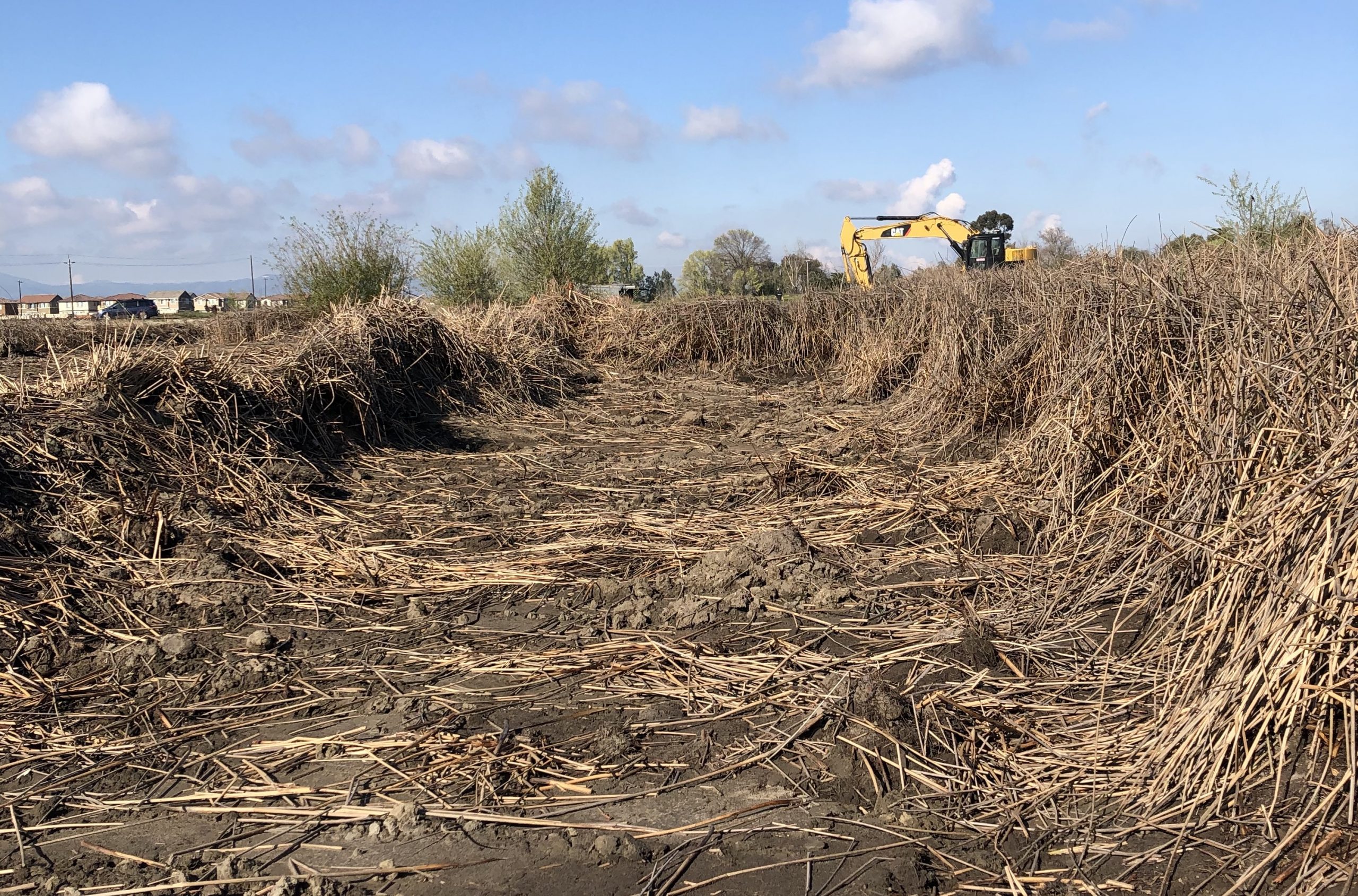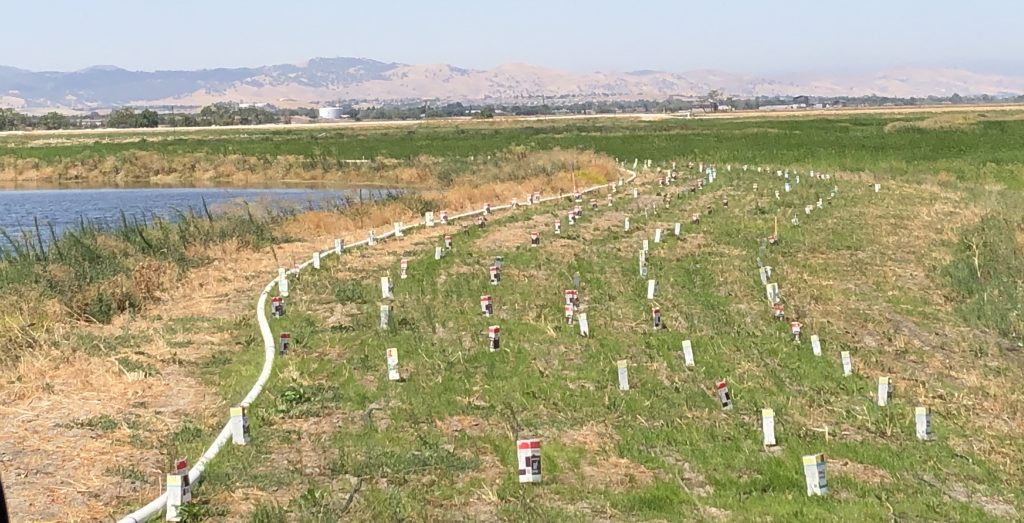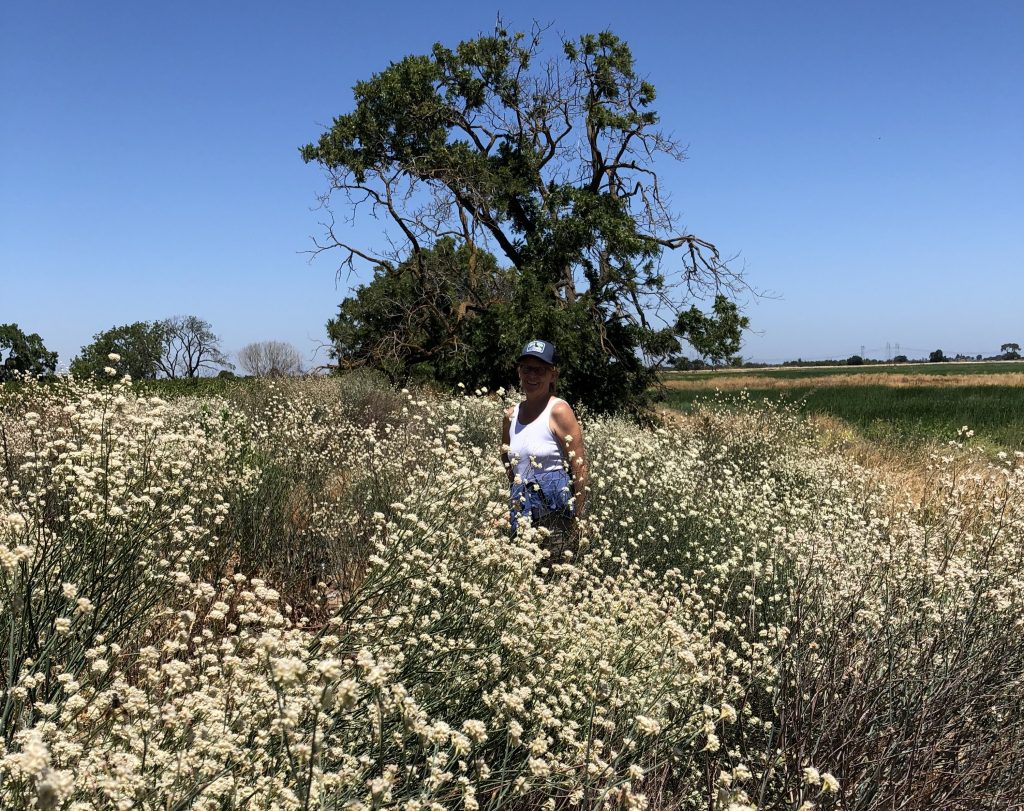
For a hawk’s-eye view of one of the Estuary’s most ambitious restoration efforts, visit the Dutch Slough Tidal Marsh Habitat Restoration Project’s YouTube channel. Drone-shot footage shows what the Department of Water Resources has been doing on 1,200 acres of former wetland, converted to pasture and subsided up to 15 feet, in the West Delta between Big Break and Jersey Island. After moving millions of cubic yards of soil to elevate the marsh plain, a team of engineers, scientists, and contractors led by project managers Katherine Bandy of DWR and Mark Lindley of Environmental Science Associates has carved channels and created a basin-and-range landscape on the Emerson and Gilbert parcels, the western two-thirds of the project site.
“We spent a lot of time studying remnants of historic tidal channel networks, looking at the sinuosity, the radius of bends,” Lindley explains. “There wasn’t much background to draw on. Then we added in topographic complexity, creating berms along the slough channels to dissipate wave energy and support a variety of plant communities.” The berms were built with onsite fill from the channel excavations.
Leading the revegetation effort, DWR senior environmental scientist Molly Ferrell is growing a variety of species including California hibiscus and valley oak for upland scrub and riparian habitats and naked-stem buckwheat for remnant and restored sand dunes on the Emerson Parcel, where there’s also a working vineyard. For the marsh plain, River Partners grew tule plugs in an on-site irrigated nursery.

“Part of trying to revegetate before breaching the levees is soil stability,” says Bandy. “We’re encouraging the tules to spread before opening the marsh to tidal action, giving it a head start. With projects further out in the Bay or inland at the right elevation, we could just open the levee and let nature take its course. Dutch Slough needed more human intervention.”
The project is on track for five levee breaches later this year, “more or less simultaneously,” Bandy adds. “It’s a bit of a dance to make sure we don’t breach ourselves into a corner.” Work on the easternmost Burroughs Parcel, delayed by uncertainty about funding and development plans for privately owned land next door, is gearing up, with groundbreaking as soon as 2022.

Beyond restoring hydrological and ecological functions and habitat for fish, birds, and other wildlife, Dutch Slough is envisioned as a living laboratory with an adaptive management framework. “It’s designed to further increase our understanding of restoration implementation,” Bandy explains. U.S. Geological Survey researchers will study the effects of varying marsh sizes and elevations on wetland formation and carbon cycles. There will also be a recreation component, with eventual trail access linking with the East Bay Regional Park District’s trail system. Bandy, whose career involved mitigation efforts before stepping in when former project manager Patricia Finfrock retired, sees Dutch Slough as “a unique opportunity to work on a pure restoration project.” Lindley concurs: “It’s a really rewarding project. It’s amazing we’ve been able to get it all constructed.”
Prior Estuary News Stories
Big Restoration Experiment at Dutch Slough, September 2018
Drone Videos of the Project
More Drone Videos from Spring 20201
Top Photo: Site work at Dutch Slough. Photo: Katherine Bandy.